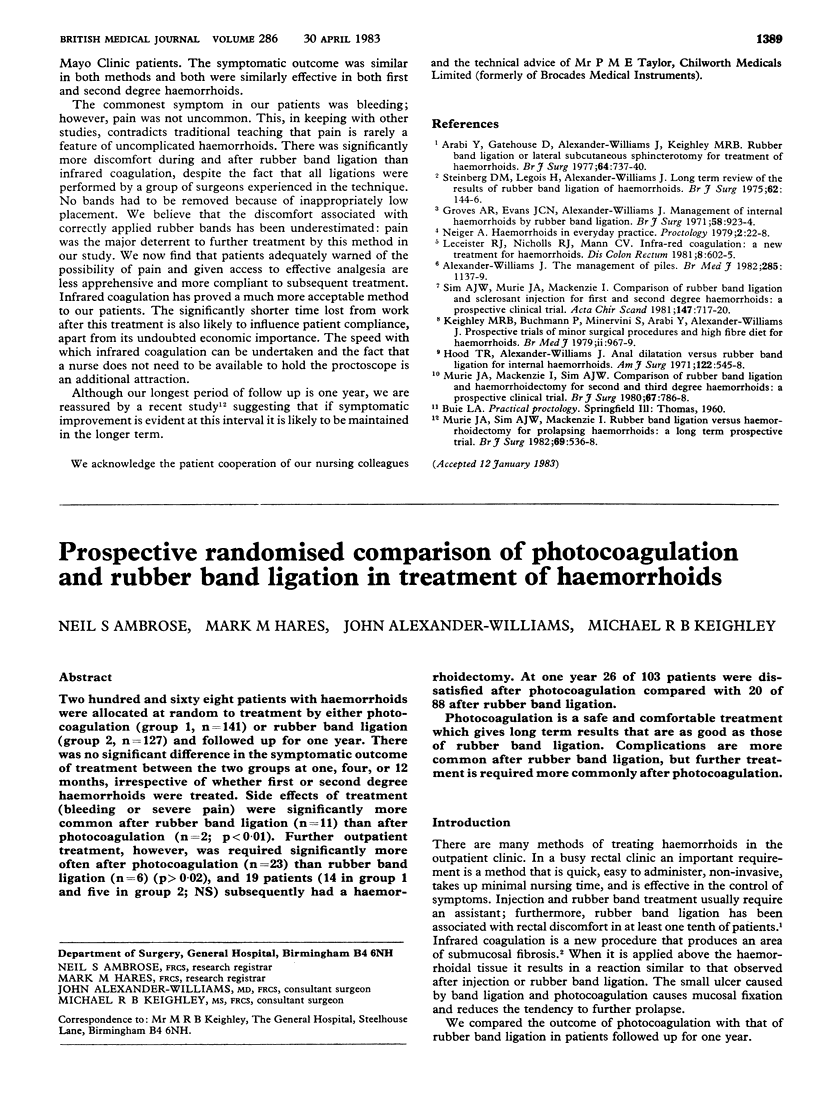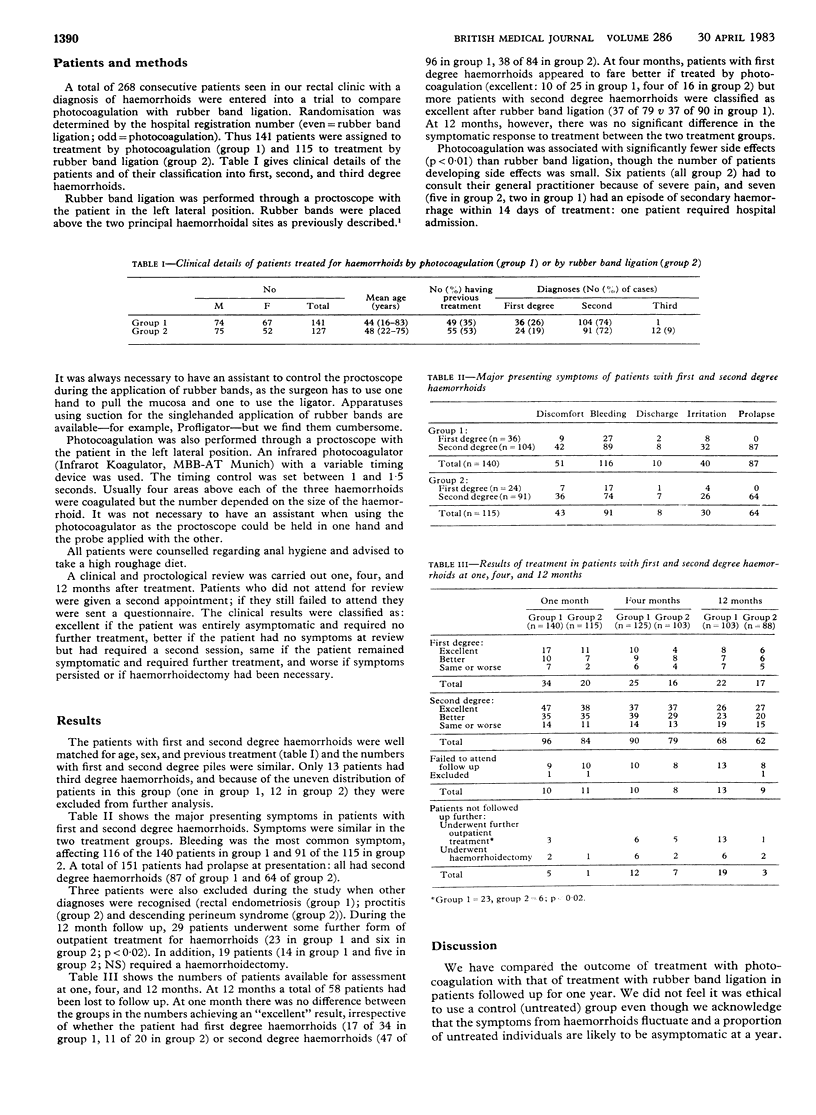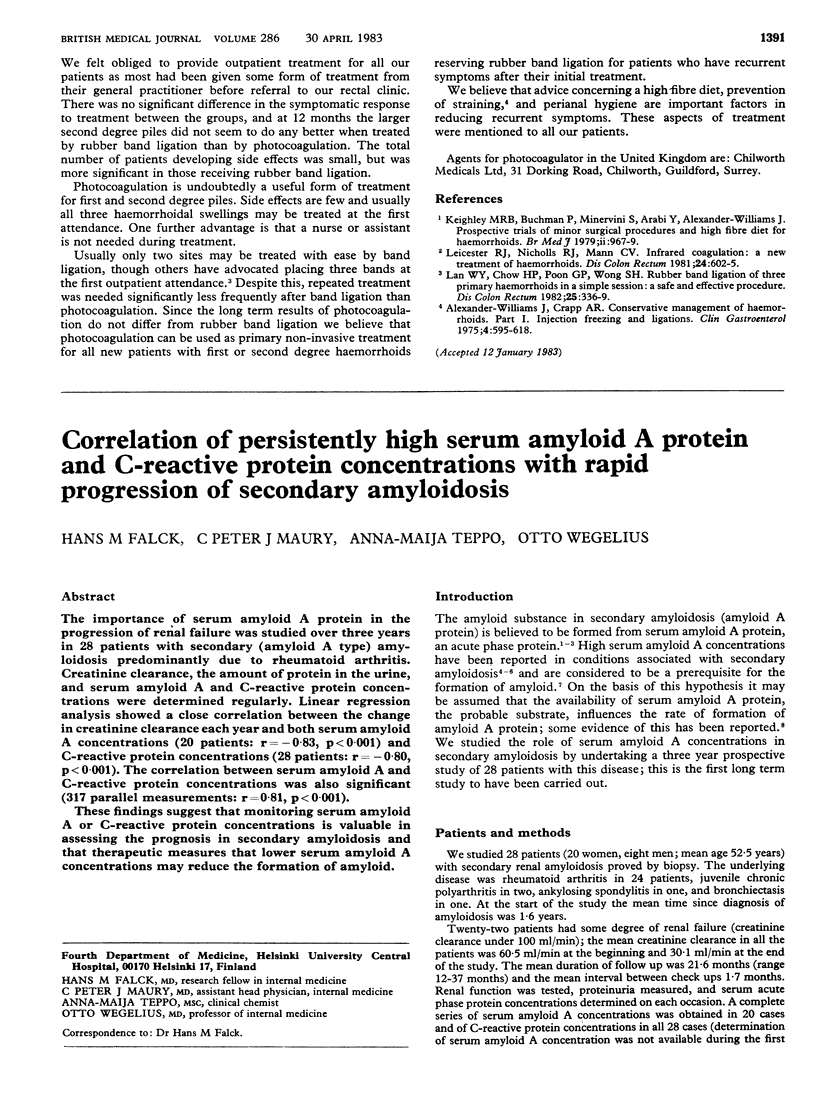Abstract
Two hundred and sixty eight patients with haemorrhoids were allocated at random to treatment by either photocoagulation (group 1, n=141) or rubber band ligation (group 2, n=127) and followed up for one year. There was no significant difference in the symptomatic outcome of treatment between the two groups at one, four, or 12 months, irrespective of whether first or second degree haemorrhoids were treated. Side effects of treatment (bleeding or severe pain) were significantly more common after rubber band ligation (n=11) than after photocoagulation (n=2; p less than 0.01). Further outpatient treatment, however, was required significantly more often after photocoagulation (n=23) than rubber band ligation (n=6) (p greater than 0.02), and 19 patients (14 in group 1 and five in group 2; NS) subsequently had a haemorrhoidectomy. At one year 26 of 103 patients were dissatisfied after photocoagulation compared with 20 of 88 after rubber band ligation. Photocoagulation is a safe and comfortable treatment which gives long term results that are as good as those of rubber band ligation. Complications are more common after rubber band ligation, but further treatment is required more commonly after photocoagulation.
Full text
PDF


Selected References
These references are in PubMed. This may not be the complete list of references from this article.
- Alexander-Williams J., Crapp A. R. Conservative management of haemorrhoids. Part I: injection, freezing and ligation. Clin Gastroenterol. 1975 Sep;4(3):595–618. [PubMed] [Google Scholar]
- Keighley M. R., Buchmann P., Minervini S., Arabi Y., Alexander-Williams J. Prospective trials of minor surgical procedures and high-fibre diet for haemorrhoids. Br Med J. 1979 Oct 20;2(6196):967–969. doi: 10.1136/bmj.2.6196.967. [DOI] [PMC free article] [PubMed] [Google Scholar]
- Lau W. Y., Chow H. P., Poon G. P., Wong S. H. Rubber band ligation of three primary hemorrhoids in a single session. A safe and effective procedure. Dis Colon Rectum. 1982 May-Jun;25(4):336–339. doi: 10.1007/BF02553609. [DOI] [PubMed] [Google Scholar]
- Leicester R. J., Nicholls R. J., Mann C. V. Infrared coagulation: a new treatment for hemorrhoids. Dis Colon Rectum. 1981 Nov-Dec;24(8):602–605. doi: 10.1007/BF02605755. [DOI] [PubMed] [Google Scholar]


